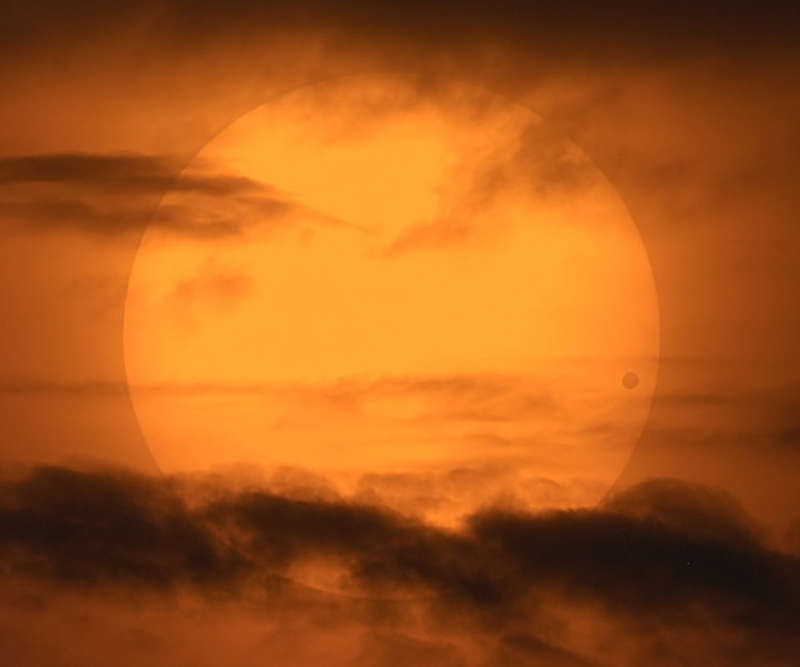
|
Credit & Copyright: David Cortner
Explanation:
The rare
transit of Venus across the face of the Sun in 2004 was
one of the better-photographed events in sky history.
Both scientific and artistic images flooded in from the areas that could see
the transit: Europe and much of Asia, Africa, and North America.
Scientifically, solar photographers confirmed that the
black
drop effect is really better related to the viewing clarity of the camera or telescope than the atmosphere
of Venus.
Artistically, images might be divided into several categories.
One type captures the
transit in front of a highly detailed Sun.
Another category captures a double coincidence such as both Venus and an airplane simultaneously silhouetted, or
Venus and the
International Space Station in low Earth orbit.
A third image type involves a fortuitous arrangement of interesting looking clouds,
as shown by example in the
above image
taken from
North Carolina, USA.
Sky enthusiasts worldwide are abuzz about the coming transit of
Venus on Tuesday.
It is perhaps
interesting to wonder whether any person will live to see -- and remember seeing
-- both Tuesday's Venus transit and the next one in 2117.
Best of APOD:
Gallery
of previous Mercury and Venus Transit images
|
January February March April May June July August September October November December |
| ||||||||||||||||||||||||||||||||||||||||||||||||
NASA Web Site Statements, Warnings, and Disclaimers
NASA Official: Jay Norris. Specific rights apply.
A service of: LHEA at NASA / GSFC
& Michigan Tech. U.
Based on Astronomy Picture
Of the Day
Publications with keywords: Sun - Venus - transit
Publications with words: Sun - Venus - transit
See also:
- APOD: 2025 December 7 Á The Sun and Its Missing Colors
- APOD: 2025 May 21 Á International Space Station Crosses the Sun
- APOD: 2025 May 11 Á The Surface of Venus from Venera 14
- The ISS Meets Venus
- APOD: 2025 March 16 Á Venus and the Triply Ultraviolet Sun
- A Conjunction of Crescents
- APOD: 2024 September 2 Á A Triangular Prominence Hovers Over the Sun
